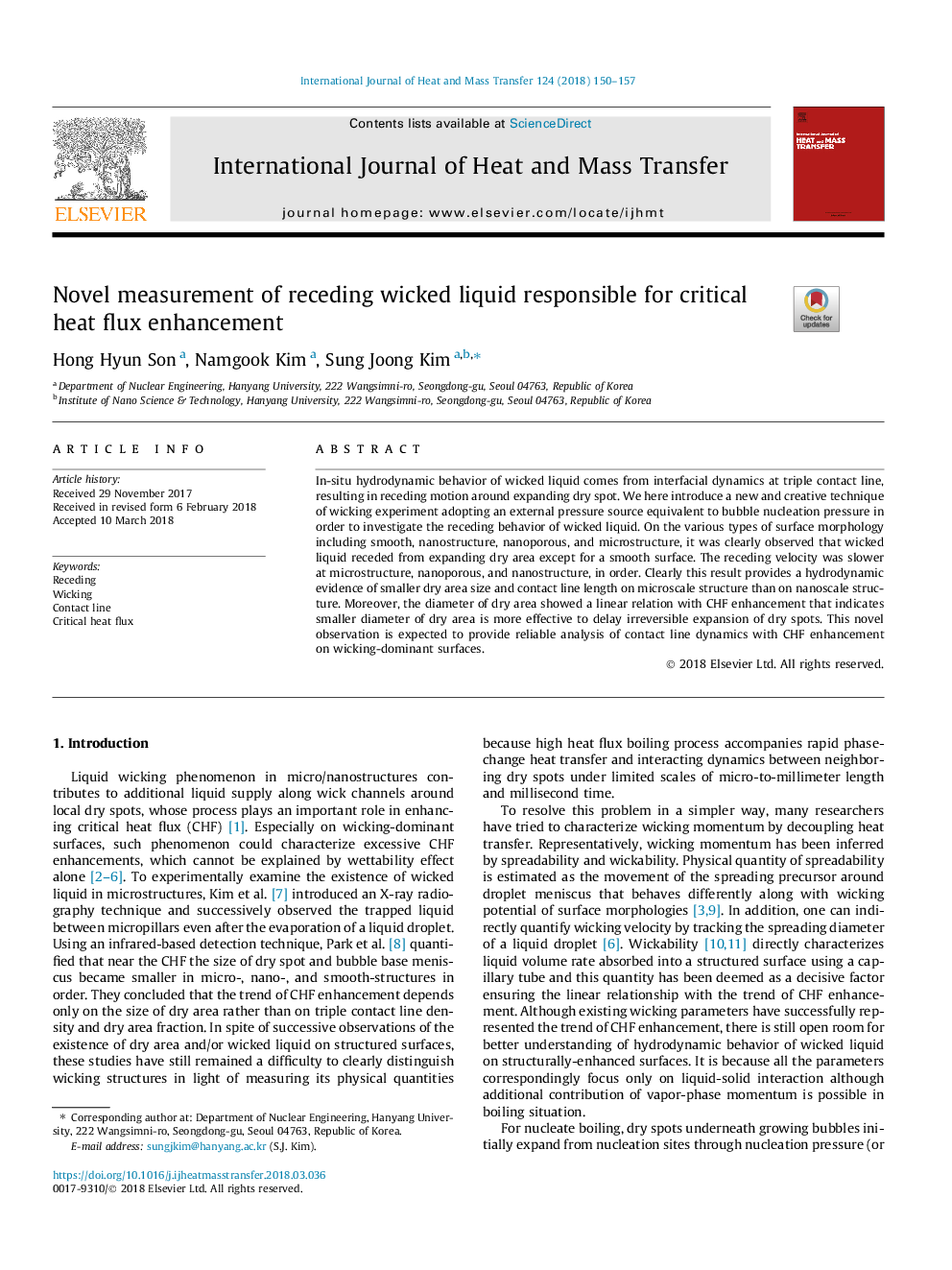| Article ID | Journal | Published Year | Pages | File Type |
|---|---|---|---|---|
| 7054146 | International Journal of Heat and Mass Transfer | 2018 | 8 Pages |
Abstract
In-situ hydrodynamic behavior of wicked liquid comes from interfacial dynamics at triple contact line, resulting in receding motion around expanding dry spot. We here introduce a new and creative technique of wicking experiment adopting an external pressure source equivalent to bubble nucleation pressure in order to investigate the receding behavior of wicked liquid. On the various types of surface morphology including smooth, nanostructure, nanoporous, and microstructure, it was clearly observed that wicked liquid receded from expanding dry area except for a smooth surface. The receding velocity was slower at microstructure, nanoporous, and nanostructure, in order. Clearly this result provides a hydrodynamic evidence of smaller dry area size and contact line length on microscale structure than on nanoscale structure. Moreover, the diameter of dry area showed a linear relation with CHF enhancement that indicates smaller diameter of dry area is more effective to delay irreversible expansion of dry spots. This novel observation is expected to provide reliable analysis of contact line dynamics with CHF enhancement on wicking-dominant surfaces.
Related Topics
Physical Sciences and Engineering
Chemical Engineering
Fluid Flow and Transfer Processes
Authors
Hong Hyun Son, Namgook Kim, Sung Joong Kim,
